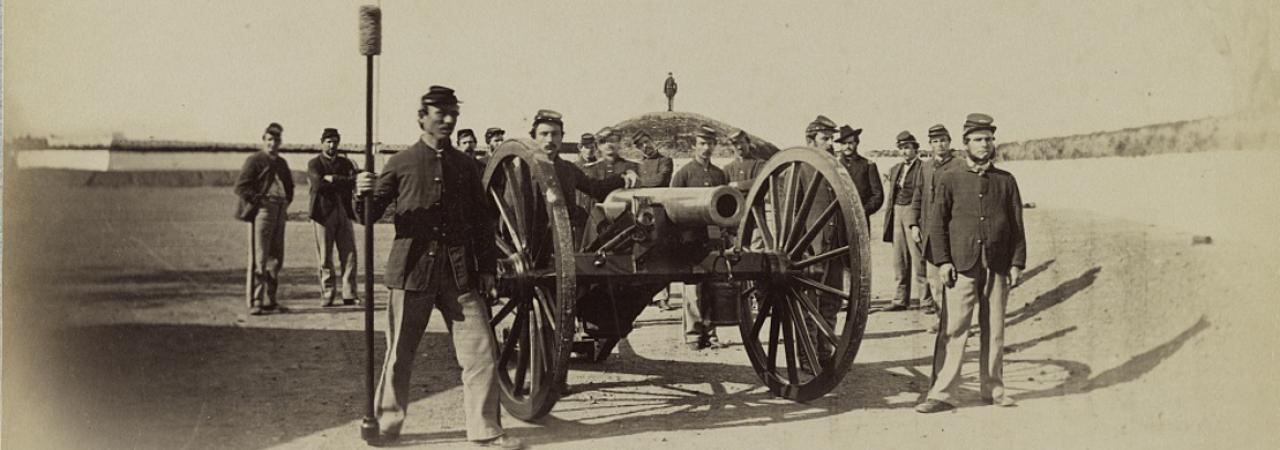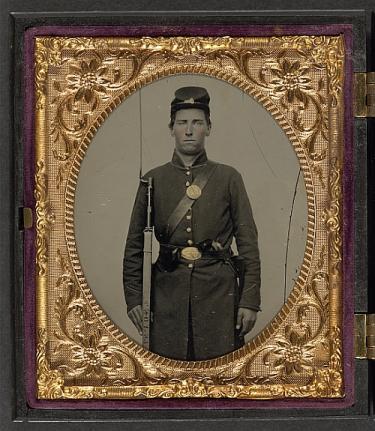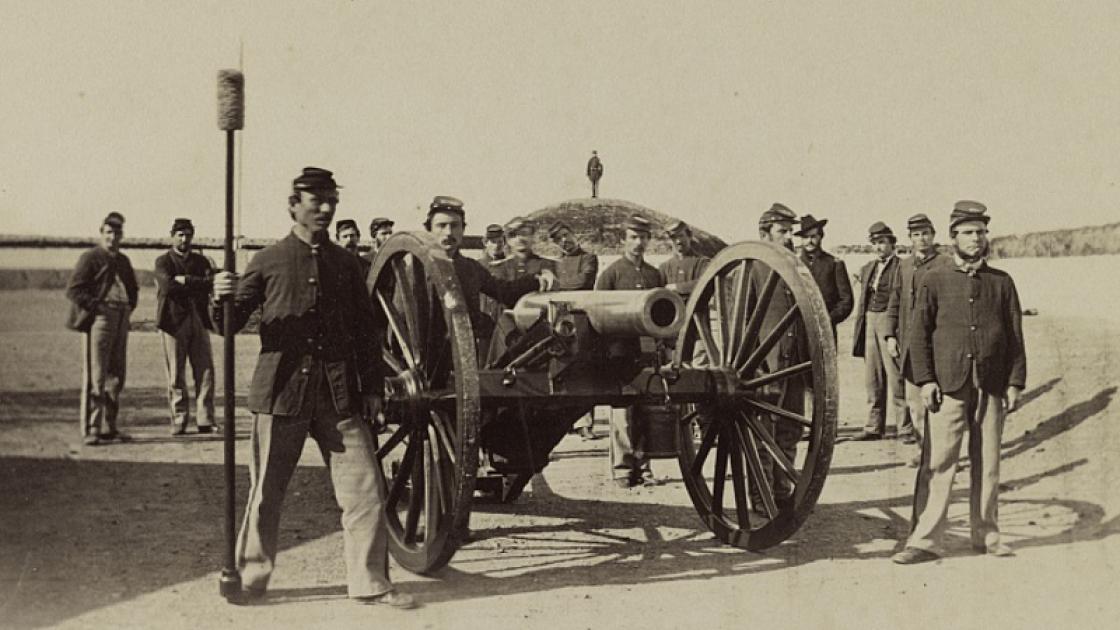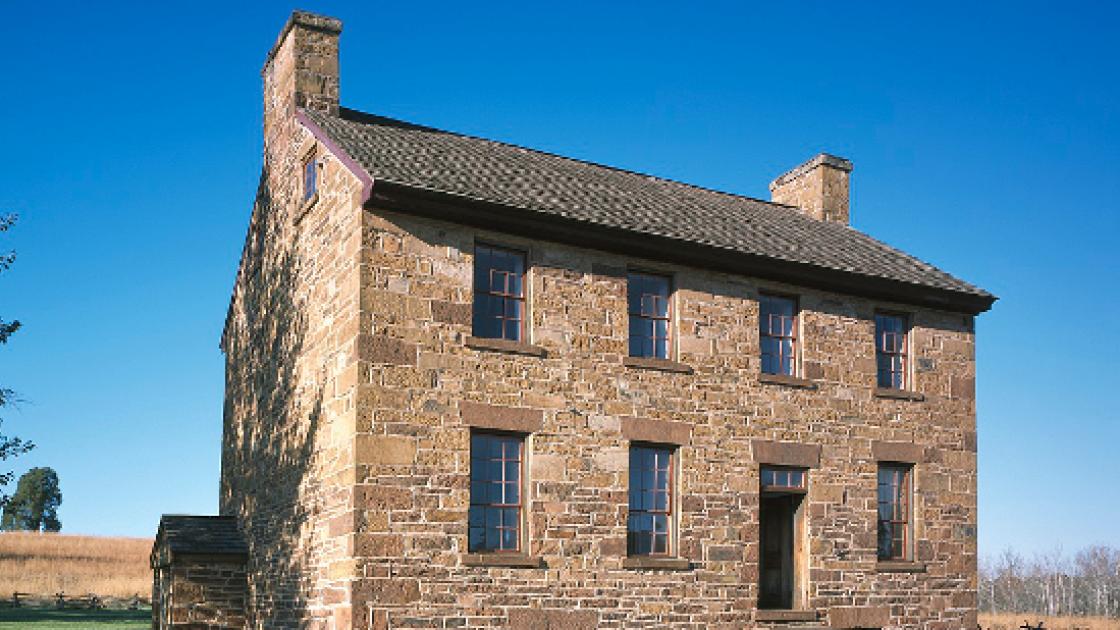
The cloth was rough and course texture, and the cutting and style would have produced a sensation in fashionable circles... Our cloths, however, were strong and serviceable, [even] if we did look and feel somewhat sheepish in them.
Ephraim Anderson, 1st MO Brigade, C.S.A. Library of Congress
While Civil War soldiers may have viewed their uniforms, weapons, and shelters as commonplace, these items serve as fascinating relics for today's Civil War enthusiasts. And what better way to understand these items than to touch and hold them with your own hands? Here are six ways in which to experience the Civil War through the sense of touch.

Wool Uniform
The standardization of military uniforms in the Civil War was sporadic at best. The Union army had a consistent dress code, but due to shortages of fabric and differences in state and regimental custom, variations abounded. The supply situation was even worse in the Confederacy and many rebel soldiers made do with what they could scavenge or patch together. The uniforms of both factions were generally composed of heavy wool, which was irritating on the march and often far too hot for the warm climate of the southern campaigns.
Touch it today: Examples of both Union and Confederate uniforms survive in museums and private collections, and exact replica costumes are widely available for the purposes of reenactment. Feel the heft and coarse nature of the uniforms between your fingers, and then if you can, try one on!
Minie Ball
The large conical-shaped projectile which maimed and wounded more men than any other implement over the course of the Civil War was the dreaded Minie ball. When fired out of a rifled musket, a great improvement over smoothbore variants of previous generations, the Minie ball was deadly accurate, while still packing a wallop. The Minie ball was well known to inflict terrible damage upon impact by tearing flesh and smashing bone.
Touch it today: Many national battlefield parks, public and private museums, and re-enactment demonstrations will feature Minie balls on display. Be sure to ask a park ranger or re-enactor if you can hold the heavy, cold hunk of lead that was capable of such horrific damage. You can also order replica Minie balls from a variety of websites.
Cannonball
Complementing the Minie ball is its larger brother, the cannonball. The standard cannon ball was a sold sphere of iron, but several other projectiles were also launched. A common alternative was known as canister shot and was the Civil War equivalent of a fragmentation grenade - spraying a cloud of small, deadly balls or fragments in front of the cannon like a giant shotgun. Cannonballs, shells, and canister shot were capable of ripping huge holes in advancing enemy lines and could thus turn the tide of battle in favor of the side with strategically placed artillery.
Touch it today: You can find cannon ball replicas at many battlefield parks, in addition to museums or even re-enactment artillery demonstrations. If you can, try holding one and imagine the destructive force of an exploding cannonball on the field of battle.

Rifle
A soldier's rifle was his best and closest friend. Without it, he was utterly useless in the face of an advancing enemy. A soldier would come to love his rifles' smooth, well-worn wooden stock, its cold, steely blue barrel, and its unique thudding recoil upon firing. The muzzleloading Springfield Model 1861 and the 1853 Enfield were by far the most commonly wielded weapons of the war, and were renowned for their accuracy and dependability.
Touch it today: While most Civil War museums will feature a plethora of rifle varieties used by both Confederate and Union troops, very few will allow you to handle these storied pieces of history. However, if you ask politely, a re-enactor may allow you to hold an exact modern replica of a Civil War-era rifle.
Bed Roll
One commonly embraced alternative to the heavy backpack or "knapsack", was the bed roll: a blanket wrapped into a cylinder and draped over the shoulder. The heavy, chaffing-prone blanket was stuffed with a limited number of personal items and necessities, and was secured with a small drawstring around both ends ensuring the contents remained inside.
Touch it today: Living out of a bedroll was not a particularly comfortable experience. They were hot, awkward, and terribly itchy for exposed skin. That being said, if you want to truly experience the life of a Civil War solider, try sleeping outside under a traditional woolen blanket, with only your shoes for a pillow.
Historic Civil War House
Due to the enormous scale of the war, small skirmishes could quickly ignite into a pitched battle between two massive armies and conflicts often engulfed a large area to include civilian homes and barns. Some of these historic homes have been preserved and touring them provides an opportunity to experience the civilian life of tranquility and passing terror.
Touch it today: There are a number of preserved Civil War homes including the Graffiti House at Brandy Station, the Stone House at Manassas, and the Thomas family home at Monocacy, where intense fighting between Federal and Confederate troops in 1864 saw the home exchanged several times in the span of only a few hours. These homes are witnesses to the war and serve as a vehicles through which we may understand, and touch the past.



